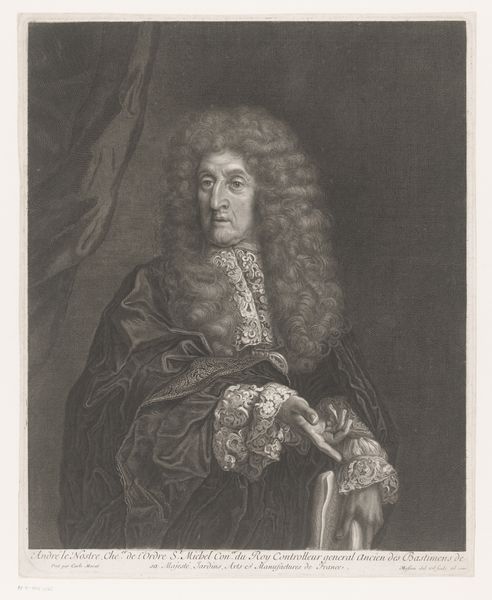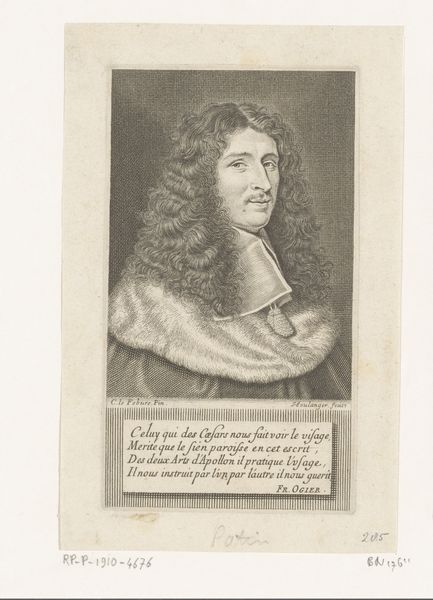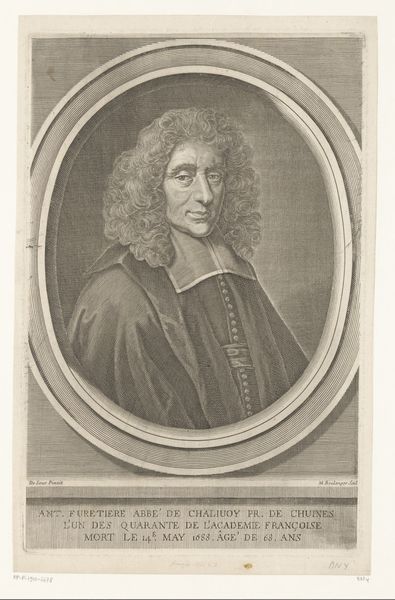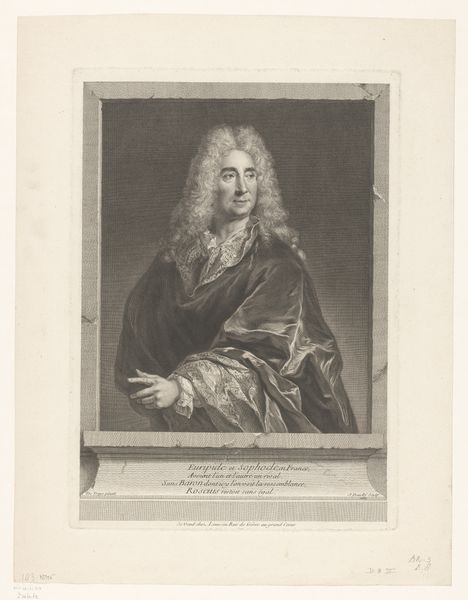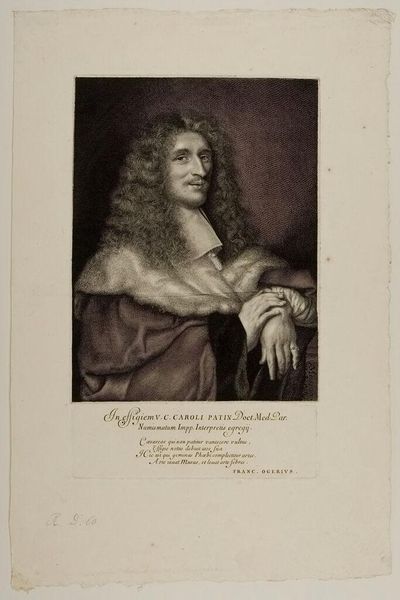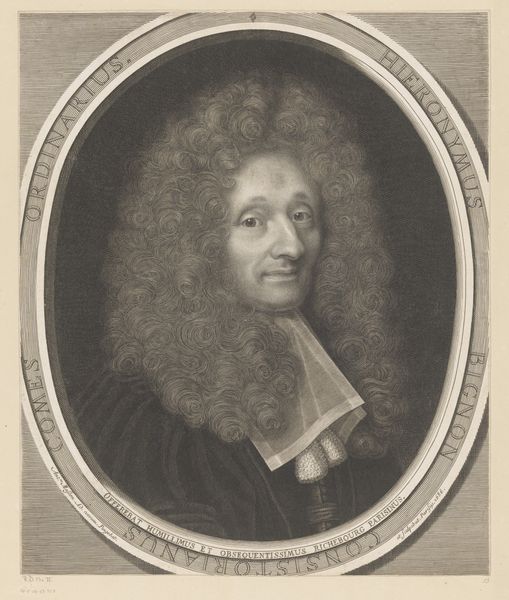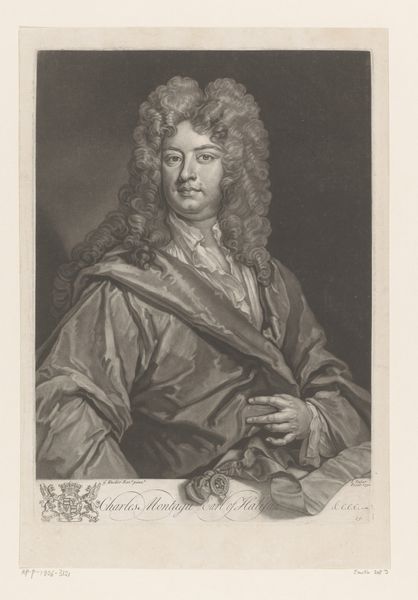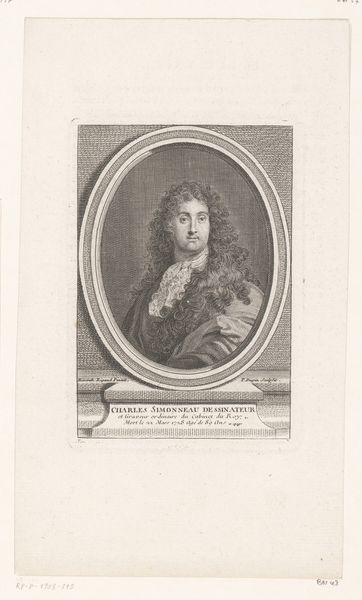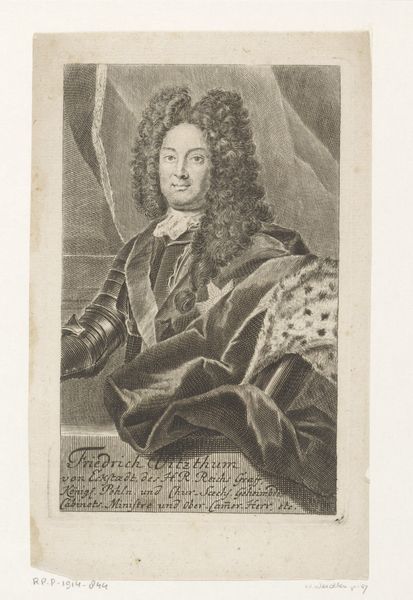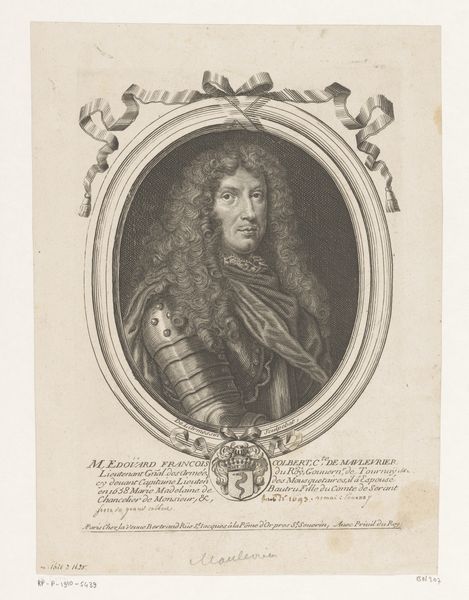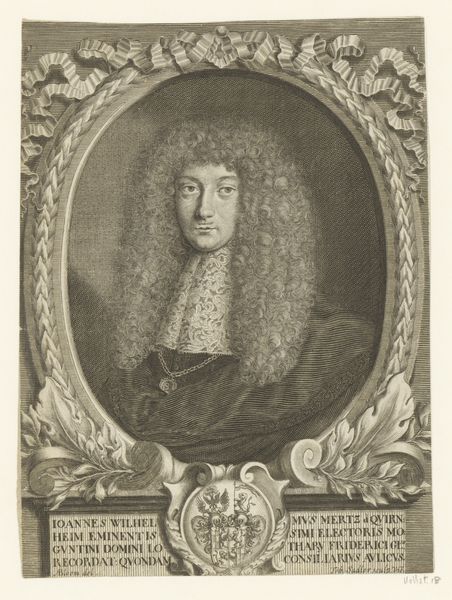
print, metal, engraving
#
portrait
#
baroque
# print
#
metal
#
line
#
engraving
#
monochrome
Dimensions: height 258 mm, width 197 mm, height 58 mm, width 193 mm
Copyright: Rijks Museum: Open Domain
Editor: This is a portrait of Charles Patin, an engraving by Antoine Masson, dating from the late 17th century. There's a formality to the composition, a kind of restrained opulence. How do you interpret this work? Curator: The formality speaks volumes, doesn't it? This wasn't simply about likeness. Consider the socio-political context. The elaborate wig, the fine garments – these are deliberate signifiers of status and power during the Baroque era, but I wonder: who had access to this kind of portrait? How did representations like this shape the perceptions of the ruling class? Editor: I hadn't thought about the distribution aspect. It was probably quite limited. Curator: Exactly. These images helped construct and reinforce a social hierarchy. It begs the question, too: who *wasn't* represented in this way? Whose stories were excluded from these visual narratives? Look at the inscription - likely only accessible to the elite. Who was being addressed in particular, and how does that shape our understanding today? Editor: That's a great point about whose perspective is missing. Seeing the portrait now, it makes me question those power dynamics. Curator: And what of the symbolism? His gesture, that ring... even the way he’s looking directly at us establishes a dynamic of power. To truly unpack the artwork, we also need to delve into philosophy and sociological studies. What sort of intellectual circles did Patin navigate? How might we connect his life with larger events, such as the scientific revolution or burgeoning social unrest? Editor: I appreciate your highlighting the historical and social dimensions. Curator: I hope I helped you consider artworks in the broader contexts of cultural moments and power structures, allowing for enriched discourse and more dynamic readings of history through visuality.
Comments
No comments
Be the first to comment and join the conversation on the ultimate creative platform.
